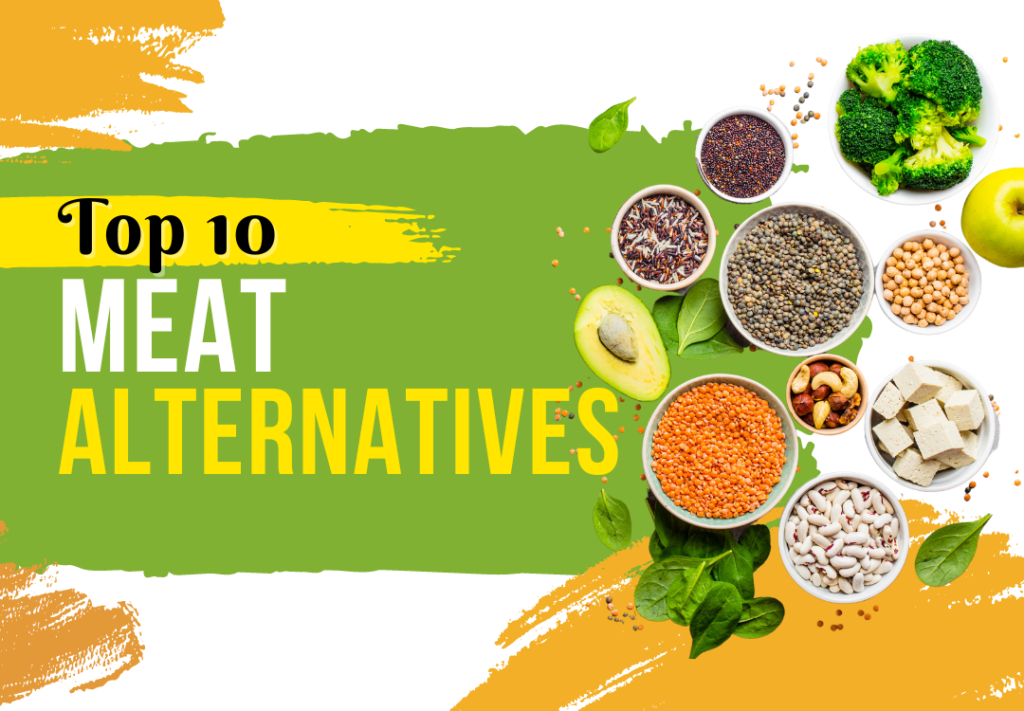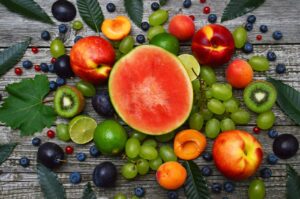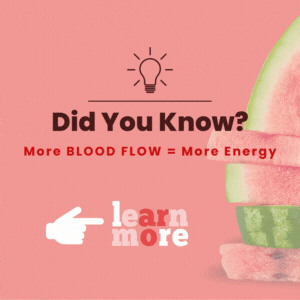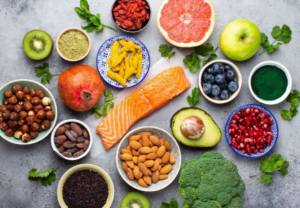Every year, more individuals reassess their meat consumption, opting instead to incorporate nutritious meat alternatives into their diets.
In fact, if it continues to grow at this rate, research indicates that the US plant-based protein sector might reach $17.4 billion by 2027. This is happening for a number of reasons.
With rising meat prices, the growing popularity of veganism, and research indicating that eating a lot of meat may be unhealthy, more people are turning to a meat-free lifestyle.
Furthermore, with large meat “ranches” emitting massive amounts of methane and depleting resources that might be utilized for human consumption, people are reconsidering healthy meat alternatives for their nutritional needs.
However, if you are thinking of eliminating meat from your diet, bear in mind that you must still get adequate protein in your diet in order to stay healthy.
When it comes to your overall health, protein is just as vital as vitamins, carbs, and regular exercise.
Protein, for example, aids in the formation and repair of body tissues such as skin, bone, blood, and muscles. Proteins also contribute to increased muscle growth and strength. Furthermore, they aid to increase your metabolism, allowing you to burn more fat.
Scientific research even found that eating a high-protein diet reduced blood pressure, “bad” cholesterol, and triglycerides. Protein also makes you feel fuller after eating less, which is beneficial for weight maintenance or reduction.
What To Look For In Healthy Meat Alternatives
When selecting a vegetarian product, read the ingredients and nutrition label thoroughly. You want to make sure it isn’t high in harmful fats and salt, and that it hasn’t been over-processed.
Examine the number of ingredients as well. The higher the number, the more heavily processed the product is. Look for salt and added sugar, preferably fruit sugar which is a natural, healthier alternative.
Always read the labels because not all products have enough protein to meet the daily recommended amount. Some meat substitutes will provide vitamins and minerals that a typical vegetarian diet may lack, such as zinc, iron, and Vitamin B12.
In actuality, only a small number of plant-based foods contain all of the nine necessary amino acids. These are referred to as full proteins.
Buckwheat, soy, and quinoa are some of the few plants that are complete proteins. To get all of your essential amino acids, you should eat a wide range of plant foods.
In this article, we’ll look at the top 10 healthy meat alternatives, as well as some important nutritional facts you should be aware of.
Meat Alternative #1: Tofu
Most meat replacements are manufactured from legumes such as soy or peas, vegetables, and grains. Those plants provide almost as much protein as your body requires and may be combined to provide the same amount as meat.
Tofu is the most well-known and traditional meat alternative. It’s manufactured from soybeans and has been used for generations in Asia as a cheap yet healthful source of protein.
Additionally, it has few calories and readily absorbs the flavors and aromas of any marinades and spices you choose to apply.
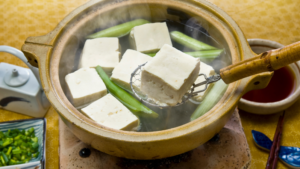
Because of this, it may be used in several ways in your diet. It is intended to be consumed more like cheese – as a savory meal component on its own.
However, it may be used to produce some tasty alternatives to meat.
Tofu is made by soaking soybeans and then mashing them with extra water to create a puree. The puree is next filtered to remove the fibrous particles from the liquid portion.
Heating the liquids to just below boiling temperatures, causes the tofu to curdle and solidify in the same manner as cheese is created.
The tofu is then pressed into slabs and cut into any form you like – generally basic rectangles. Okara, the fibrous solid portion of the puree, may be dried and utilized as alternative meat pieces or mince.
Tofu is available in extra-firm, firm, soft, and silky varieties. You may even squeeze out even more water before cooking for a crisper outcome.
Some recipes specify that it be patted dry before cooking. To get the maximum taste out of your tofu, make sure you follow the instructions exactly.
Silken tofu is ideal for smoothies, although extra-firm tofu may be fried or grilled like meat.
Tofu has 188 calories, 20 grams of protein, 12 grams of fat, 868 milligrams of calcium, 13 milligrams of iron, and 0.7 grams of fiber per cup.
A non-GMO product or one that is organically grown is something to look for. Genetically modified organisms (GMOs) are grown on about 82% of the world’s soybean farms, according to a 2016 study.
Given that we haven’t been consuming GMOs for very long and don’t yet fully understand their long-term effects, many customers are wary of these products.
Soy is a complete protein, which means it includes all nine essential amino acids. It is typically supplemented with Vitamin B12, which is absent from plant-based proteins.
Because soy contains natural phytoestrogens, you should limit your consumption to once or twice a week.
If you are pregnant or have had hormone-related cancer, see your doctor before eating tofu since the natural hormone may cause serious complications.
Meat Alternative #2: TVP
Textured vegetable protein (TVP) or soy protein is typically sold in the form of mince, chunks, cutlets, or balls. It absorbs the odor and taste of the other ingredients you’re cooking with, much like tofu.
Dehydrated soybeans may be blended with water to form a cheap, healthful meat alternative.
This protein is an excellent substitute for meat patties, meatballs, cutlets, and meat sauces such as chili or bolognese.
Soy protein is low in salt and contains fiber. Magnesium, iron, phosphorus, and calcium are also present.
This product is typically more processed than some of the other meat alternatives, so read the nutrition label carefully before purchasing. Make sure that your substitute contains only soy.
One cup of TVP (dried) or soy protein has around 222 calories, 35 grams of protein, 0.83 grams of fat, 164 milligrams of calcium, 6.3 milligrams of iron, and 12 grams of fiber. It also contains a considerable amount of magnesium and several B vitamins.
Soy is a high-protein plant, although, the isolating agent used to create the protein isolate removes many of its inherent nutrients.
To prevent pesticide concentrations from the extraction process, opt for organic or non-GMO products.
Find out where your soy product comes from as well. Soy cultivation, for example, is responsible for the majority of deforestation in Brazil, and we should set an example that we do not want this to happen.
Meat Alternative #3: Tempeh
Tempeh is another product derived from the versatile soybean. It is a traditional Indonesian food produced by fermenting the whole bean.
Tempeh, like cheese, requires the work of specific bacteria to break down part of the bean proteins and make them more digestible to humans.
Tempeh has a drier texture, roughly 20% protein, and is rich in fiber, making it an excellent meat alternative.

To give the tempeh a heartier flavor and texture, other grains and different beans can be combined with it. Not everyone will enjoy tempeh because of its mildly acidic flavor and nutty aftertaste.
It may be grilled, fried, sautéed, or baked, and it’s delicious in a lettuce wrap or grain bowl. It’s particularly tasty as a BBQ meat alternative.
The fact that tempeh is fermented, like yogurt, also helps to maintain healthy bacteria in the gut.
It’s also abundant in calcium and antioxidants, and its high manganese level may aid with blood sugar regulation. It’s also generally low in salt.
Because it is high in fiber, you should add it to your diet gradually to prevent bloating and gas.
One cup of tempeh includes around 319 calories, 34 grams of protein, 18 grams of fat, 184 milligrams of calcium, and 4.5 milligrams of iron, and is high in magnesium and Vitamin B6.
When it comes to tempeh, check the nutrition label. People with celiac disease or gluten sensitivity should avoid it if grain has been added.
It’s also not suitable for people who are allergic to soy. Because of the additional calcium, it’s ideal for a dairy-free or lactose-intolerant diet.
Meat Alternative #4: Seitan
This protein can be found in regular wheat. Seitan has a meat-like consistency and is simple to cook and season. It has been a staple of Asian cuisine for countless generations and has kept people healthy without the usage of expensive meat.
It is made by thoroughly rinsing wheat flour dough in water to get rid of all the starch particles. The remaining wheat gluten is then steamed, baked, or boiled to give it a texture similar to that of meat.
This is a time-consuming process, and it goes without saying that anyone with celiac disease or gluten sensitivity should avoid it. Seitan powder is readily accessible in various countries.
It is affordable and may be used to produce vegan sausages or meat products like cold cuts or cutlets.
Seitan can also be purchased in strips. It works well in stir-fries, curries, and salads, and it may also be grilled as a kebab.
Although it has a flavor akin to a mushroom, with the right seasoning, it can taste just like chicken! Seitan most closely resembles meat in terms of look and texture.
It tastes great on sandwiches, on pizza, in tacos, or just in strips on a bed of lettuce.
Seitan has 140 calories, 28 grams of protein, and 2 grams of fat per four-ounce serving. It also contains a lot of riboflavin, niacin, and vitamin B6, but no iron or calcium.
Seitan, unlike other meat substitutes, does not provide a complete protein or contain all nine amino acids.
Add some additional plant proteins, such as quinoa, pumpkin seeds, white beans, or lentils, to the seitan to maintain a balanced diet.
Before you buy, read the label, as most of the ready-made varieties contain preservatives and chemicals such as salt, stabilizers, and soy sauce.
Meat Alternative #5: Lupin Protein
Lupins are legumes, similar to soybeans. They are native to the Mediterranean but grow well in Europe, where they are expected to be the future healthy meat alternative.
Lupin protein may be used to create practically any sort of meat alternative, including sausages, cutlets, and doner kebabs.
Lupin protein isolate has about 90% protein, which is rather high for a plant. It has no cholesterol or gluten, and it is lactose-free.
It is used not only as a meat substitute but also as a milk or flour substitute. This plant protein is even used to make ice cream!
Lupin has 193 calories, 5 grams of fat, 15 grams of carbs, 85 milligrams of calcium, 2 milligrams of iron, and 5 grams of fiber per cup.
You can get lupin protein at the majority of organic food stores, vegan grocery stores, and online.
Meat Alternative #6: Oat Flakes
Oat flakes are abundant in zinc and iron. They’re inexpensive and can generally be purchased in any grocery store or supermarket.
They provide a consistent supply of carbohydrates, which keeps you fuller for longer and may even help you lose weight.
Oat flake cutlets can be made from fried oat dough mixed with vegetable broth, a little fat, shredded vegetables like zucchini or carrots, and other vegetable proteins.
You can even find “pulled oats,” which is an alternative to pulled pork. These are made of oat bran, oat flour, oat protein, pea protein, fava bean protein, oil, and salt.
The “pulling” technique yields a meat-like consistency that has led non-vegans to believe it is truly meat.
Oat flakes contain 178 calories, 30 grams of carbs, 4 grams of fat, 4.5 grams of fiber, and 5.5 grams of protein per serving (approximately 50 grams).
Meat Alternative #7: Black Beans
Like most legumes, black beans are high in protein and fiber. They have a dark hue because of colorful substances called anthocyanins. They are powerful antioxidants.
The darker the bean, the more anthocyanin it contains and the healthier it is.
Black beans are typically formed into hamburger-like patties with a texture comparable to ground beef.
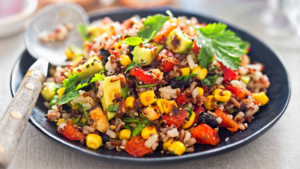
Black beans are often consumed on their own, particularly in Mexican cuisine.
If you get them in a can, you can either drain the liquid and save it for later use or cook the beans with a premade sauce. Naturally, they are gluten-free, just like all legumes.
A half cup of black beans has 114 calories, 7.6 grams of protein, less than a gram of fat, 20.4 grams of carbs, 7.5 grams of fiber, 23 milligrams of calcium, and 1.8 milligrams of iron.
In addition, they include zinc, potassium, magnesium, phosphorus, and several B vitamins.
Meat Alternative #8: Chickpeas
This bean has more protein than most varieties of meat. They are incredibly filling and are used as the main ingredient in several Mediterranean foods such as hummus and falafel.
Chickpeas also have high levels of iron, calcium, and fiber.
One fascinating tidbit about chickpeas: if you beat the brine or liquid (aquafaba) from the can, you can produce a vegan meringue that works similar to the egg-white version.
The pea proteins seep out into the water, making it look like an egg white.
Simply add a little cream of tartar as a stabilizer, beat or whip softly at first, then increase the speed to achieve a fluffy meringue.
Add sugar and vanilla extract to make a wonderful dessert.
One cup of chickpeas has 267 calories, 14.4 grams of protein, 4.2 grams of fat, 44.7 grams of carbs, 12.5 grams of fiber, 80.4 milligrams of calcium, 4.7 milligrams of iron, magnesium, phosphorus, potassium, zinc, vitamins C, E, and K.
Meat Alternative #9: Pea Protein
The pea, another popular legume, has a high iron and protein content while also being low in fat and cholesterol.
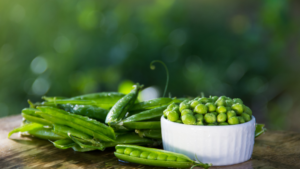
Pea protein is one of the newer meat substitutes, and it can normally be found in vegan-friendly grocery stores.
It’s difficult to replicate the texture and feel of ground beef, but pea protein isolate or textured pea protein comes close.
Some meat replacements color the pea protein isolate with beets to give it the appearance of “medium-rare beef.”
As with all legumes, pea protein is gluten-free. It is free of soy or genetically modified organisms (GMOs), which is a new concern with vegetables.
Keep in mind that pea protein has less fiber and starch than whole peas.
Peas take less water and area to cultivate than other crops, and peas (and also other legumes) “convert” nitrogen from the atmosphere into forms that other plants may use.
Meat Alternative #10: Jackfruit
Jackfruit is native to India. When picked just before it ripens, it has a texture similar to pulled pork. It has a mildly sweet flavor, but when seasoned, it may mislead the taste buds into believing it’s meat.
Jackfruit has a lot of fiber, magnesium, vitamin B6, and antioxidants. It also has a low carbohydrate content.
A one-cup serving contains 157 calories, 2.5 grams of fiber, 2.8 grams of protein, and 739 milligrams of potassium.
However, since it isn’t a complete protein, combine it with a bean or grain for a more nutritious meal.
Before making a purchase, read the nutrition label as some of the pre-seasoned packages may have added sugar.
Top Substitution Brands
As meat alternatives have grown in popularity, there are many different brands to pick from.
We’ll take a look at some of the most well-known brands that you could try:
Beyond Meat
This company creates “ground beef” products like Beyond Beef using pea protein. To achieve a “natural-colored” burger patty, they use beet coloring.
Boca Burger
Another long-standing favorite. Their burgers and Spicy Chik’n Patties are made with pea protein.
MorningStar Farms
Owned by Kellogg’s, they provide various vegan (dairy and egg-free) foods such as Buffalo Chik Patties, Buffalo Wings, and Chicken Nuggets.
On the packaging, look for the yellow “V” signifying vegan.
Field Roast
Made from grain protein, their products include vegan sausages, deli slices, roasts, burgers, and even meatloaf.
On their Field Burger, try the vegan cheese Chao Slices.
Gardein
You can find healthy meat substitutes for chicken, beef, sausage, and more. Some of their products include their famous Meatless Meatballs. As well as a golden fishless fillet and crabless mini-cakes.
Lightlife
This company produces Non-GMO foods for plant-based diets. They are best known for their veggie dog, called Smart Dog. You can find a variety of burgers, sausages, breakfast links, and patties.

Tofurky
They’ve been operating since 1980 and are most known for their holiday roast. They also have deli slices, veggie dogs, chorizo-style ground “beef”, tempeh bacon, and vegan pizza.
Trader Joe’s
This supermarket chain sells a large range of vegan products, including Chickenless Crispy Tenders.
Be sure to try their meat-free versions of bolognese-style pasta sauce and the always-popular Mandarin Orange Chicken.
Simply Balanced
This is Target’s vegetarian product line, which includes Teriyaki Meatless Turkey, Mushroom Miso Meatless Turkey, Korean Barbecue Meatless Chicken, and Smoky Chipotle Meatless Chicken.
Sweet Earth Natural Foods
They’re known for their seitan, pea protein burgers, and burritos, but they also make “bacon” and three types of ground round. Double-check the label though, to make sure it’s vegan.
Yves Veggie Cuisine
Founded in 1985, this company offers a variety of items such as Vegan Grain Strips with BBQ Sauce, Original Meatless Jumbo Hot Dogs, Veggie Brats Classic, and Meatless Canadian Bacon.
Conclusion
Are you aware that higher consumption of plant protein has been linked to a decreased death rate?
According to one research, South Asians residing in the United States had substantially fewer cardiometabolic risk factors when they adopted a vegetarian diet.
Meat markets also bring with them health dangers such as swine flu and salmonella.
Additionally, using antibiotics to raise livestock results in the formation of diseases that are resistant to the majority of our standard drugs.
As meat becomes less nutritious and more dangerous, it is understandable why more people are turning to meat alternatives.
Furthermore, processed foods are bad for both your body and the environment.
Even if you are not a vegetarian, you may reduce your consumption of red meat and replace it with other meat options such as fish, chicken, or turkey.
The options we’ve discussed in this article are by no means exhaustive. As new products enter the market, It’s a good idea to experiment with different brands, and recipes.
Healthy meat alternatives are a low-cost option to provide your body with the protein it requires to heal and restore body cells and tissues.
They are beneficial not just for humans but also animals and the planet.
Adopting a meatless diet may help you lose weight and lower your risk for heart disease.

